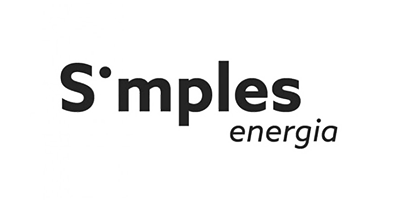

Project Designation
GPDER+ – Grid’s Predictive Management Considering Distributed Energy Resources
Project Code
Projeto Nº 39892
Region of Intervention
Matosinhos, Porto
Beneficiary Entity
Efacec Energia, Máquinas e Equipamentos Eléctricos, S.A.
Duration
2019 – 2022
Consortium
Efacec Energia – Máquinas e Equipamentos Eléctricos S.A
INESC TEC
PH ENERGIA, LDA.
ARMIS – Sistemas de Informação, LDA.
Total Eligible Costs
2.328.368,90€ (60,96%)
Financial Support of the European Union
The project has received funding from the European Regional Development Fund (FEDER – Fundo Europeu de Desenvolvimento Regional), via Operational Programme “Competitiveness and Internationalization” (POCI – Programa Operacional Competitividade e Internacionalização).
Main Goal
The GPDER+ project aims to develop (i) a SCADA/DMS system dedicated to the predictive management of the distribution grid and (ii) a Demand Response Management System (DRMS) platform dedicated to the creation of new business models dedicated to the management of Distributed Energy Resources – DER, operated by third parties, such as aggregators, sellers, consumer cooperatives. These two platforms will be developed having in mind the specificities of distribution grids with high integration of renewable energies and flexible resources, considering functional and non-functional technical requirements for the integration of flexibility in the electricity market and system operation, endowing the Distribution Operator with greater observability and predictable controllability of the electric grid, and promoting the integration of new business models based on the sale of flexibility to the Distribution Operator.
These solutions will be integrated into the ScateX# ADMS (Advanced Distribution Management System) system and will contribute to a change in the current paradigm of Distribution Grid Management.
General Goals
The GPDER+ project aims to investigate and develop a SCADA/DMS System dedicated to Predictive Management of the Distribution Grid (at HV & MV level) and a Demand Response Management System (DRMS) Platform that will allow the implementation of new business models for the Management of Distributed Energy Resources (DER) operated by different entities (e.g., aggregators, sellers, consumer cooperatives). The platforms to be developed will be prepared to deal with the specificities of the Distribution Grids, namely a high integration of renewable and flexible resources. In order to do this, functional and non-functional technical requirements necessary for the integration of flexibility in the electricity market and system operation will be taken into account, providing the Distribution Grid Operator with a greater capacity for supervision and predictive control of the electrical grid and the integration of new business models based on the sale of flexibility to the Distribution Grid Operator.
The innovative and differentiating character of the GPDER+ solution comes from the proposed development logic – Predictive Management of Distribution Grids, taking into account the modelling of the uncertainty associated with renewable energy sources, ensuring interoperability between the Distribution Grid Operator and new systems business models dedicated to the management of distributed electrical resources. Replicability is also a critical objective in the design of solutions, demonstrating, for this reason, the adoption of IEC standards, the development of computational applications for grids with reduced monitoring of measures at secondary distribution substations and the integration of different types of DER (namely distributed energy storage).
It is intended to revisit Efacec’s SCADA/DMS solution endowing it with greater robustness and scalability to the system, new functionalities, at the core modules level, and applications for grid operation. A DRMS platform will also be developed for two business models in the active management of consumption: a) cooperative made up of normal and special low voltage consumers, aggregating the flexibility at the secondary distribution substation level; b) seller essentially directed to industrial customers and buildings connected to high and medium voltage.
The project was structured in 7 activities, to be developed for 30 months, which include tasks of research and experimental development, promotion and dissemination of results and project management and coordination.
- Management of a large amount of data in electrical Distribution Grids
- Predictive Management of the Distribution Grid
- Integration of New Distributed Electric Resources (DER) in the Distribution Grid Management
- Increase in the Degree of Knowledge (Awareness) of Operators about the State of Operation of the Electricity Grid
- Integration of New Paradigms of Grid Management in the Training of Operators
- Creation of technical conditions for business models based on flexible consumption

Why the GPDER+?
The current paradigm for the management of the distribution grid is essentially reactive (i.e., real-time management of alarms and events), with no prior planning of the electricity grid operations. In this context, the information collected by telemetry is essentially used for billing and long-term planning of the distribution grid. The growing integration of renewable energy production, including photovoltaic for self-consumption, and the multiplication of distributed resources (e.g., energy storage, active consumption management) make urgent the change in the current paradigm of management of the electric grid. It is therefore important to promote the predictive management of the distribution grid (i.e., early detection and management of technical problems), including the characterization of the risk associated with the uncertainty of the diagrams of net consumption and renewable production in each node of the distribution grid. Likewise, a review of the existing functionalities in the current SCADA/DMS systems and the development of new functionalities that enhance a predictive and multi-temporal management of distributed energy resources (DER) in the distribution grid should be carried out.
The architecture of the GPDER+ system is based on two main systems operated by different actors:
- ADVANCED SCADA/DMS SOLUTION, WHICH INCLUDES TWO FUNDAMENTAL AND INNOVATIVE CONCEPTS:
- Generation of consumption forecasts (net) and renewable production for each node of the distribution grid and subsequent application of this information in several management modules of the electric grid, contributing to a planning of the operation of the HV and MV distribution grid.
- Inclusion of multi-temporal characteristics of the DER and active consumption management (Demand Response – DR) in the various management modules of the electrical grid, together with traditional resources (capacitor banks (BC), transformers with load regulation (OLTC), disconnectors and circuit breakers for the reconfiguration of the operation topology of the electric grid).
- DEMAND RESPONSE MANAGEMENT SYSTEM (DRMS) PLATFORM, that allows the development of distributed electrical resources services, namely active consumption management, the value of which can also be maximized through the supply of support services to the transmission and distribution grid (voltage control, active and reactive power, among others).
Project Milestones
| Milestone | Date | Title |
|---|---|---|
| A1 | 29/02/2020 | Preliminary Studies |
| A2 | 30/06/2020 | Technical Specification |
| A3 | 30/09/2021 | Research Applied to the Development of Functional Modules |
| A4 | 28/02/2022 | Conception and Integration of Prototypes |
| A5 | 31/08/2022 | Tests and Experimental Validation |
| A6 | 31/08/2022 | Dissemination of Results |
Contacts

Paulo Viegas
Grid Management Product Manager
M. +351 93 93 333 86
E. paulo.seixas.viegas@efacec.com







